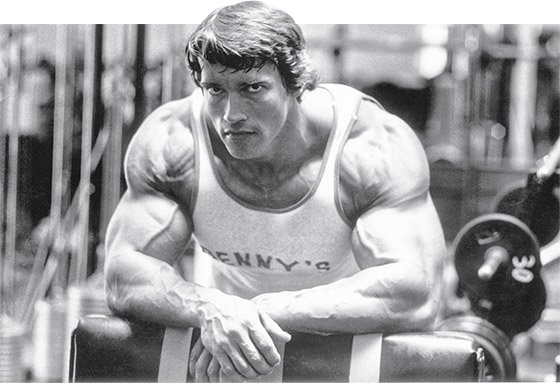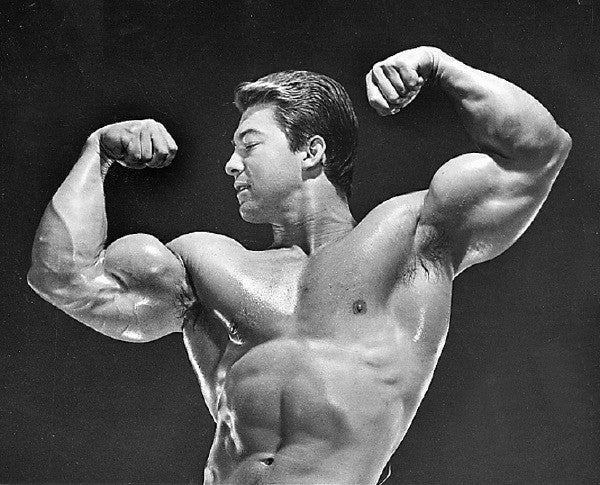Bodybuilding is no longer what it once was.
The picturesque symmetry, sharp lines, small waists, and graceful posing that was more a performing art than anything has been replaced with something much less appealing.
Something that’s much more damaging to the current image, state, and perspective of bodybuilding.
I’m talking about the MASS monsters, distended stomachs, and desperate measure that grace bodybuilding stages these days. On top of that, many are sacrificing their health and well-being for the sake of more vascularity and size. All as part of the journey to lay claim to a plastic trophy.
While I’ve stepped on stage myself and will continue to do so, for as much as I want to win, I refuse to lose sight of my health. Ultimately, this is not the era of bodybuilding I wish I was a part of, but pending my purchase of a Deloarean time machine, there’s only so much that can be done to reverse this trend.
That said, I believe that the introduction of the Classic Physique division last year is a huge step in the right direction.
But I digress.
Today, many lifters in gyms around the globe today look up to the greats; Phil Heath, Flex Lewis, Kai Greene, Dexter Jackson, William Bonac, and the list goes on.
While these bodybuilders certainly know a thing or two about a thing or two, I’ve found that the lessons we’re able to pull from the greats of the Golden Era are the lessons from which we can learn so much of what is being put into practice today. These are the lessons and pieces of knowledge that have stood the test of time, and likely will continue to do so for years to come.
The bodybuilders of the 1960’s, 70’s, and 80’s were well ahead of their time when it comes to achieving ridiculous physique development, and only now are we starting to see science that supports much of what they did to craft their physiques and display their brilliance upon the stage.
At the enthusiast level, hours upon hours have been spent studying their routines, their diets, their individual preferences, and what would they would change as they prepared to step on stage.
Best of all, after some reading between the lines, there are lessons from each bodybuilder that you can put into place immediately, that will improve your training and physique in leaps and bounds.
I’ll let the fabled greats of the Golden Era take it from here.
Arnold “The Austrian Oak” Schwarzenegger.
If you look at the samples of Arnold’s routines that we’re able to get our hands on these days, it’s clear that high volume work was the lifeblood of his training. Although it seems that in his eyes, high volume was not quite enough in of itself. Thus, he favoured a high frequency, high volume training split.

Now that’s a face that means business.
Straight from Arnold’s Modern Encyclopedia Of Bodybuilding, here are two examples of the split he followed.
Training split #1
Day 1 – Chest and Back
Day 2 – Shoulders and Arms
Day 3 – Legs and Lower Back
Day 4 – Chest and Back
Day 5 – Shoulders and Arms
Day 6 – Legs and Lower Back
Day 7 – Rest
Training split #2
Day 1 – Chest, Back and Legs
Day 2 – Shoulders and Arms
Day 3 – Chest, Back and Legs
Day 4 – Shoulders and Arms
Day 5 – Chest, Back and Legs
Day 6 – Shoulders and Arms
Day 7 – Rest
No body part was trained less than twice per week, and the per session volume was typically in the 20-30 set range (legs seemed to be a bit lower in some cases).
The Oak’s takeaway: High training volume, and the frequency in which you hit each muscle is a major key to driving muscle growth. If you’re not growing and you feel your recovery, nutrition, and stress is in check, start by assessing your training volume and frequency. Adjust accordingly.
Frank “The Chemist” Zane.
To set the record straight, Zane was dubbed “The Chemist” for having a Bachelors of Science degree, and for being ahead of the curve when it came to supplementation (allegedly, mostly amino acids).
The picture below is iconic in the bodybuilding world. If a picture is worth 1000 words, this one summates how and why Zane was able to win the overall title at the Olympia three years in a row, despite competing in the under 200 class. Which is a feat not easily done. Regardless of how tight, and clean of a package you bring, it’s incredibly tough to stare down the the guys in the open class who would bring just as conditioned physiques, with much more muscle.

In Zane’s case, this success on the Olympia stage was largely due to his meticulous detail to symmetry and proportion.
A major part of creating his look – and the picture above – was his phenomenal propensity for abdominal vacuums. Which are arguably one of the greatest abdominal exercises you can do, when physique development is your goal.
The ability to make your waist tighten and shrink before your eyes is incredibly powerful, and it’s tough to truly train your transverse abdominals in any other way.
The Chemist’s takeaway: Add abdominal vacuum work into your training. It’s tough to effectively train your transverse abdominals otherwise. Plus, you’ll watch your waist shrink and your upper body grow in illusory fashion before your eyes.
Robby “The Black Prince” Robinson.
I haven’t read every bodybuilder’s biography ever published, but of the one’s that I’ve read, Robby Robinson’s is incredible (my favourite by far).
Being a black bodybuilder in the 60’s and 70’s meant that there was not a lot in his favour, he efforts constantly went unrewarded, and he had to work incredibly hard to even be recognized on stage, despite clearly blowing away his competition.
The inherent hardships of his life aside, it was his training routine that really stood out to me, and can benefit your physique many times over.
From the day Robby started training (around age 12) up until he finally made the move to Venice Beach, California, he trained his entire body, everyday, 6 days per week. He stuck to the traditional compound movements of squats, bench press, military press, deadlifts, rows, and so forth. Often for 6-7 sets of 10, pushing the envelope on weight as much as he could.
No matter how you look at it, that’s a lot of years hammering away at the basic movements, and getting really fucking strong.

Honestly, this is just fantastic.
Honestly, I think many lifters would benefit from training in this fashion for their beginning months in the gym. Training these specific movements with such frequency allows you to get truly skilled at these movements, as well as generate a ton of intramuscular tension – which is a key driver of muscle growth.
The Black Prince’s takeaway: If you’re new to the lifting scene, begin by training your entire body, every day, at least 4 times per week. Spend time getting really fucking good at the big compound movements, and watch the mass pile on.
Larry “The Legend” Scott.
Larry Scott has become renowned for his incredible bicep development.
Those biceps of fury that he built, were a direct result of spending hours on the preacher bench. You could say he was even praying to the gym gods for arm gains, if you wanted.

Gimmie them ‘bis, son.
Either way, he spent so much time on the preacher bench, that the very movement his often referred to as Scott Curls. Larry even went so far as to build and manufacture his own, optimized version of the preacher bench.
The Legend’s takeaway: If your biceps are lacking (*raises hand*), your arms will benefit from spending a lot of time on the preacher curl. The full range of motion you’re able to work your biceps through, in combination with a high volume all equate to some serious thickening of your biceps.
Franco “The Sardinian Samson” Columbu.
Possessing arguably the greatest nickname of the Golden Era aside, before Franco stepped on a bodybuilding stage, he was a Strongest Man competitor, and it clearly shows in his physique.
As such, Franco was a huge proponent of building a sound base of strength before focusing on adding crazy amounts of muscle. This is a line of thinking that’s influenced much of programming over the years.
Franco possessed a side chest pose that is not to be fucked with.
As friend and fellow coach, Chris Coulson, put it: You need more than just heavy weights to build mass. Starting Strength is a great beginner program for learning the key lifts, but it’s not going to get you huge. You need training volume, and lots of it. Tension, blood flow, and muscle damage are the 3 programming pillars of successful hypertrophy training.
The Sardinian Samson’s takeaway: Get strong like bull before shifting your focus to muscle growth. Strength feeds muscle, before muscle can feed strength.
The final reps.
While we may not all have the genetic makeup, the physical structure or the desire to craft a physique reminiscent of the Golden Era greats above, that doesn’t mean that there aren’t lessons to be learned from their experience.
Lessons that you can put into practice today. Lessons that can streamline and fine-tune your training. Lessons that can help you train more effectively, build more muscle, and present a better physique. Regardless of what your ideal look is.
These were smart lifters, true kings of the iron jungle who knew a thing or two. We’d be remiss to not study and learn from them at every opportunity.
About the Author

Alex is a short shorts enthusiast, espresso connoisseur, and budding master chef (certainly not your average meathead). When he's not working towards a Greek God-like physique or learning how to better serve his clients, he can be found exploring how to further crush life, perfect his flair in the kitchen, or pull the perfect shot of espresso. You can join his free Muscle Building Course over at MASSthetics.net

